Podcast transcript: Transforming a business from the ground up
Read the full transcript for this episode of the IT Pro Podcast
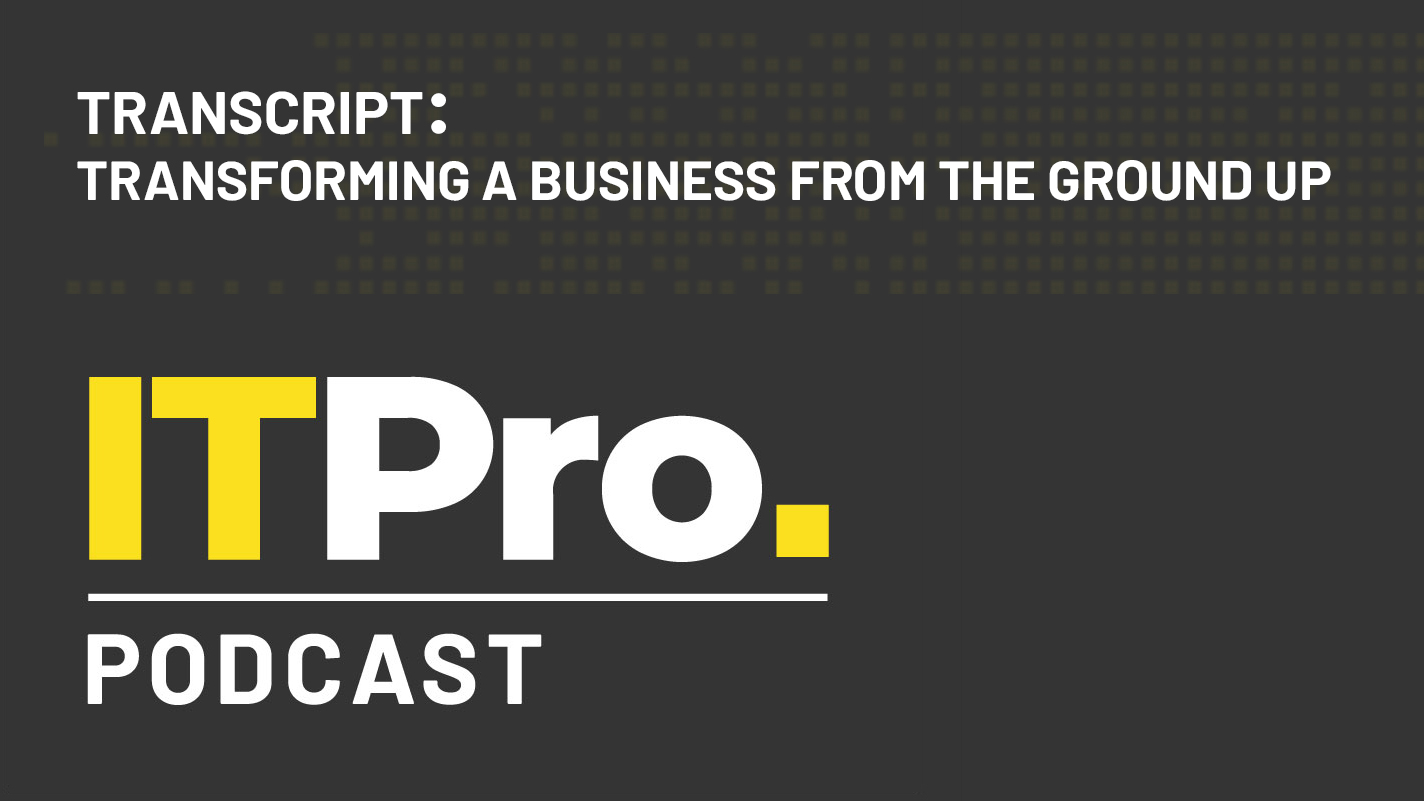
This automatically-generated transcript is taken from the IT Pro Podcast episode ‘Transforming a business from the ground up'. To listen to the full episode, click here. We apologise for any errors.
Adam Shepherd
Hi, I'm Adam Shepherd.
Hugh Armitage
And I'm Hugh Armitage.
Adam
And you're listening to the IT Pro Podcast, where this week we're looking at what really happens when established processes meet the need for digital transformation.
Hugh
Organisations throughout the country and across the world have been grappling with the task of modernising their business processes and technology infrastructure for years. But the realities of running a transformation project can often be more complicated than they first appear.
Adam
Organisations with a long history may have considerable technical depth to contend with, for example, and the leadership that's particularly set in its ways may take some convincing before they can be brought around to the benefits of newer platforms or ways of working.
Hugh
This week, we're joined by Rita Bullivant, director of IT and change at the Melton Building Society to talk about her efforts to transform the technology of this long established organisation, including some of the challenges she's faced and her plans for the future of the business.
Sign up today and you will receive a free copy of our Future Focus 2025 report - the leading guidance on AI, cybersecurity and other IT challenges as per 700+ senior executives
Adam
Rita, it's a pleasure to have you with us.
Rita Bullivant
Thank you. Nice to see you. And nice to be here.
Hugh
So Rita, can you tell us a little bit about your role at Melton Building Society?
Rita
Yes, certainly. I joined the Society in March 2020. And within a few weeks of arriving, Boris announced the first COVID lockdown. So I went from being somebody new, who had some time to digest and understand what was going on around me into an emergency. What are we going to do, how we go to work, oh my God, situation.
Adam
Wow.
Rita
My responsibilities in the role are twofold. I lead the IT conversation; that is all about running our business, making sure we've got the right tools, that were safe, not not under the scrutiny of cyber criminals, and evolving our business, helping it to meet its meet its business targets. The other part of my job is all about change and transformation. When I was appointed, it was very clear to me that there needed to be a really big review of what the business wanted to do. And therefore what the technology toolkit that was required to help the business meet its goals. Lockdown in many ways helped me accelerate that conversation. The business I joined hadn't had any meaningful IT investment for over a decade. For example, the email system was Lotus Notes. And it was housed in our storage solution. So every time there was a problem with storage, which was end of life, our email system went down. And that was our only communication vehicle, apart from our desk phones, of course, but with four digit extension. There was there was a lot to do immediately. And so the difficulty was deciding what to do first, I had anticipated coming in and forming a really nice IT strategy over a five year period for the board to sign up to. And I was faced with, you know, we need to do something, we need to do it fast. And we need to carry on working. And so the decision was that we focus on our people and collaborative tools first.
Adam
So what were the first things on your to do list in terms of modernization?
Rita
There's a lot, a very large amount of technical debt that I inherited within the platform. So as I just touched on earlier, we decided to in the strategy recommend that we focus on collaboration. So we immediately purchased an Office 365 licence. And then percolated all the tools, one by one that that brings. The size of the business dictates really the direction of technology we go in. It's really important for businesses like the society who haven't invested for a very long time, not to be overly ambitious, to take things, piecemeal, one step at a time. So we invested in Microsoft Teams first, we put a bolt on system with it called soft phones, which allowed our staff to work from home, contact customers, talk to each other. So that's where we started. We then removed Lotus Notes, brought in Outlook, everything else that comes with that. And it was interesting for me because I had never worked somewhere where I couldn't read my emails at home in the evening. That was the culture that the society operated in.
Adam
I mean, that's one way to get work life balance, I suppose.
Rita
Yes, it was.
Hugh
So how quickly did you turn that around? Especially with the Teams after a lockdown was announced.
Rita
So Microsoft Teams implemented in two weeks, I have a, I had a very good team. They were really keen to break out of the culture, the technical culture we worked under. So we put Teams in. And that signalled to everybody that we were on a journey. You know, there were only a handful of people that had laptops, they were all C-level and above. We had a handful of VPN licences. So unless you physically came to work, you couldn't work. That was, that was what we were tackling. But now, you know, most of our staff, I think 90% of our staff have laptops, they've got Teams at home. We're a very modern workforce now. And culturally, that was a bit of a journey as well for us because it was something we needed to move toward, very quickly. And we didn't have much time to orient people's minds. And I know that sounds a bit strange, because in today's world, you know, the Y Gen is in the workforce, everybody expects everything to happen on their mobile devices. But in this environment, that mindset was left at the doorstep. And when you came in, you had a desktop. And you had a desk phone, and to orient people to merge that technology ability, with the time they have you know, the boundaries blur a bit, don't they? When you're mobile? And that's where we were trying to get to, right in the heart of lockdown.
Hugh
Were people receptive to that? I mean, the employees and then, and then sort of the execs as well.
Rita
Oh, absolutely. Everybody was 100% behind us. I say 100%, there was a handful of staff that that struggled. But we understood that, and we were patient and helped. You know, we wrote crib sheets, and we helped people, or when we were issuing the laptops, for example, people came into the IT team room, they were shown how to use a laptop. Might sound silly in big organisations but you know, we wanted to make sure that people were comfortable taking equipment into their homes and doing work they weren't used to doing at home, at home. We had a couple of members of the team that didn't, you know, have all the equipment that was required. But you know, we helped out with that. And in hindsight, you know, COVID was a terrible, worldwide event. But this, you know, I always look for silver linings. And this was one of the silver linings for me where it forced our business to readdress its attitude towards technology and its ability to modernise ourselves.
Adam
So you mentioned that you kind of came into the business with, you know, a five year plan in mind for the organisation to start kind of rolling out some of these modernization and transformation initiatives on a presumably a much slower scale.
Rita
Yes.
Adam
How long do you think it would have taken you to or taking the organisation rather, to get to where you are now, if it hadn't been for COVID?
Rita
I think the five year plan would have played out as a five year plan. COVID actually forced the acceleration. So we formed a programme of work and called it Project Foundation. Because foundationally there was a lot to do. The first phase of that finished last year, it was all about people, collaboration tools that help them, equipment, the mindset around hybrid working, all of that. The second phase is all about our network. You know, the things IT people worry about. We've introduced SD WAN, which is an a first in the industry, we've completely overhauled how we deliver mobility in terms of Wi Fi, in the building at head office, across our branches, you know, our branch staff will soon have, you know, reliable Wi Fi rather than a little router in the corner in the hallway. So and we'll be finished with it in May. And so something that I planned would take five years; I mean, these are milestones. We're going to finish way before time, and we're really pleased, of course, with that comes pressure on the business to run as well as change. There's all the investment that was planned over a period require, you know, needing to be spent earlier than the finance team would like. But it's all for the greater good.
Adam
So you've mentioned some details about the society's infrastructure, particularly around things like Lotus Notes running on a on a storage array and whatnot, which I'm sure is giving many of our listeners palpitations, just thinking about - what kind of, what kind of situation was the organization's back end infrastructure in in terms of some of the, let's say, technological plumbing that finance organisations need in order to deliver services to their clients.
Rita
So the answer might strike you as a little bit strange. The plumbing was fine, it worked. But it needed a huge amount of eyeballing constantly. So every time we thought something was about to go wrong, somebody had to gallop in and attend to a wire or a cable or a server. We found all sorts of solutions that had been cobbled together that that worked, but weren't what we would call in the industry best practice. And so the job infrastructurally was to unpick that and start overlaying on top of it fit for purpose solutions, and that was across the board, whether you talk about SAN, the Wi Fi, the network, our you know, server room, there was a, when I first went in on my first day, I asked to go into the server room, and there was a pile of cables on the floor that were red in colour, nobody had any idea what they were for. And the pile was two foot high. Because I measured it.
Adam
Oh my lord. That's, that's bonkers.
Rita
But you know. So we had to attend to it very, very quickly. And there were lots of these. It was great fun, don't get me wrong, I hadn't faced into any any situation like this before. And before I came to the society, I knew what I was getting into. And there was, you know, things that I thrive on, are learning new things, facing into problems that need to be solved. I get really interested and excited by things like this. Weird.
Hugh
Was there anything that took you completely by surprise, surprise, apart from the enormous pile of cables?
Rita
Lotus Notes! So on my first day, I'd come from an organisation that was completely modern. Everything was in Amazon, HCL was the supplier. I'd been to India every year to see them and you know, supplier management. And suddenly I was in an organisation that was at the opposite end, technology solution wise. Yes, it was Lotus Notes on my first day, I got my login to the email system, expecting Outlook to fire up. And I didn't know how to use Lotus Notes, I really didn't, I had to be shown. And then you do the show me how what the wires and gubbins looks like and then did a trail back to the SAN. And I was like, Oh my goodness.
Hugh
Did the company understand how much of a journey they had to go on?
Rita
I talk to them at very high level, what I need to be mindful of is that for 10 years, there's been no technology conversation. So the way I approach the subject is about business goals. It's about what we can afford. It's about keeping safe. And it's about data. The fourth pillar we're facing into now. And when you manage the storyboard in an appropriate way to the audience, the message is received. If I started talking about SD WANs, SANs and you know, soft phone capability, I would just lose the audience and therefore not you know, achieve the goal of getting the, gaining the agreement and the finance to do the work.
Adam
Yeah, cuz the last thing you want to do, when you're instituting this kind of plan is spook the the board and kind of throw a huge amount of jargon and acronyms at them. Because having them on side for that kind of project, I would imagine is completely essential.
Rita
It's vital.
Adam
Yeah, and you need to, they need to be able to conceptualise what it is you're trying to do.
Rita
Yeah, absolutely. I also have to remember that until I arrived, as far as they aware, there wasn't really a problem.
Adam
Yeah, one of those situations where, you know, they're just like, what, you mean everyone doesn't just use Lotus Notes and has no email capability at home? This is completely normal, isn't it?
Rita
Yes, it was an interesting time having that conversation. But yeah, I managed to in the first, you know, strategy conversation we had later later that year, the strategy was approved. It's very pleasing.
Adam
And have you found that any members of the board have really taken to this new kind of digital way of working? Or has it still been kind of very tentatively adopted, let's say?
Rita
I think there's, there's a little bit of both there. We, as as the society has reformed itself, and put itself on a transformational journey, we've acquired more board members who are interested in technology. So we've, we've mixed our board up as well. So there is a huge amount of interest. You know, one of the things that we did last year was completely change the way the board team connect with us. No longer do they use their personal email addresses for, for work, you know, it's actually a society email address. It sounds very fundamental. But these conversations haven't been held previously, they've got, you know, company devices; previously, they used their own or, you know, devices, they've been issued by the society that somebody had bought from Curry's, which was the reality of the situation. So we are, you know, I think, entering the phase in our transformation lifecycle where we're ready to really take off like rockets, because, you know, the fundamental work is finished almost.
Adam
And I'd imagine a lot of these initiatives will put the organisation on a much stronger footing in terms of things like cybersecurity and things like risk profiles, which, you know, for the financial services sector, obviously, are hugely, hugely important.
Rita
Yes, there are, the programme, the foundational programme had so many facets to it, cyber was one of them, we filled in a self assessment and asked an external party to look at it, we got some feedback, none of it was a surprise. And the programme was formed that the the board was signed up to, to address some of the weaknesses, one of the biggest things that's happened in the society is that IT and change have a place, a seat, which previously it didn't, it was hidden amongst finance, which, you know, traditionally IT can be reporting into finance, but here, you know, there's there's a seat for IT and change, you know, the board look at reporting from IT and change, have a conversation. So I'm really pleased about how the conversation has moved forward,
Hugh
Have the changes that you've implemented so far, started to affect the way you deliver services to your customers? I imagine there's a lot of customers who have been your customers for years and decades, and how's it affecting them? And are they responding to the changes in the company?
Rita
We have started on that journey, the first phase of our transformation, it was all about collaboration, and our people and our core product toolkit, we're moving into the customer area now. So we have, and I can't name them, but we've contracted with a FinTech, who've delivered us a really fantastic solution for onboarding customers. Now there, the customer journey with them only goes so far. And now we're looking into what we can do with the second part. So as a customer, you can borrow from us, and you can have a savings account with us. Once you've borrowed from us, we would really like to walk alongside you in your lifecycle journey. And so we're looking for ways and solutions to do that. But not only that, we're looking inwardly about our data position. You know, we I've seen many, many organisations want to harness the data that is available, and can help with that conversation with customers and always look for IT tools, which is perfectly normal. However, before we go to market to find a tool that can help us with customer insights, because that's what we're talking about here. Businesses need to understand that they need to stop operating in data silos. You know, when I when I talk about data silos, I mean finance have their own data set that they need, marketing have theirs, IT have theirs, the ops team have theirs, but as a business to be successfully helping the customer and ourselves, we need that one customer view. We need to understand all the data, not just the bit we're interested in. Once we've got to that position, we can then go off and harness whatever toolkit we want the technology to, to give to us. So we're on that journey.
Adam
Yeah, breaking down those silos is one of the most, I don't know if challenging is the right word, but certainly one of the highest priority initiatives, for most organisations that we speak to that are looking at digital transformation, and particularly operational transformation in terms of things like business process, and all of that kind of stuff, getting those joined up workflows between departments is really, really important. And a lot of the time, it's not about technology, so much as it is about organisational attitudes and strategies and getting everyone talking to each other. Even if that's just, you know, sharing a spreadsheet between different departments, is often the first step, you know, before you start thinking about, you know, data lakes and pipelines and platforms and all of this kind of, yeah, admittedly very impressive stuff. It's, it's usually not the first step that an organisation has to take.
Rita
That's absolutely true. We've been doing lots and lots of things, you've probably deduced that. This week, we rebranded ourselves and launched it into the big wide world. And as part of that evolution, our entire workforce has been through a series of workshops where the delegates are cross functional, and we've allowed people to talk to each other about what the new brand means and therefore what our values are going to be, therefore, how are we going to work with each other? And then we've introduced the concept of you know, digitising our toolkit further, refreshing our physical estate, you know, there's a really big transformational ladder for everyone to climb in our business. And you're absolutely right. It's not just about process, it's a cultural thing for me. If we culturally achieve that collaboration across the business, I think, from a day to day working life point of view, it will become second nature to people to collaborate. At the moment, there is no need, because of the way we're structured, because of the way our building is, because of the way our systems are. They're not end to end, they're not integrated. We have human capital, in our business that in the outside world in bigger businesses actually is an API or a middleware bit. That's what we're facing into.
Hugh
And Rita, finally, what are you moving on to next with your strategic plan?
Rita
Oh, well, we're moving into a really exciting phase, we're looking next at overhauling our building, head office, overhauling the branch network that's associated with our business. In the county and beyond. We are looking for solutions to replace existing systems so we can have more meaningful customer data so we can have better relationships with our customers. There's quite a lot. We're looking forward to hardening our cyber posture as well this year, which is again, a very interesting project with a number of partners involved. So yes, it's a never ending job. The transformation programme.
Hugh
Doesn't sound like you're going to be bored for a while.
Rita
Interesting, more interesting times ahead.
Adam
Well, sadly, we're going to have to wrap it up there as we are out of time for this week's show. But we'd like to thank the Melton Building Society's Rita Bullivant for joining us.
Rita
Thank you very much. It was an interesting conversation.
Adam
It was indeed!
Hugh
Lovely to have you. You can find links to all the topics we've spoken about today in the show notes and even more on our website at itpro.co.uk.
Adam
You can also follow us on social media as well as subscribe to our daily newsletter.
Hugh
Don't forget to subscribe to the IT Pro Podcast wherever you find podcasts. And if you're enjoying the show, leave us a rating and a review.
Adam
We'll be back next week with more analysis from the world of IT but until then, goodbye.
Hugh
Bye.
ITPro is a global business technology website providing the latest news, analysis, and business insight for IT decision-makers. Whether it's cyber security, cloud computing, IT infrastructure, or business strategy, we aim to equip leaders with the data they need to make informed IT investments.
For regular updates delivered to your inbox and social feeds, be sure to sign up to our daily newsletter and follow on us LinkedIn and Twitter.
-
 Malware as a service explained
Malware as a service explainedExplainer What is malware as a service (MaaS), why is it so popular with adversaries, and what can businesses do to protect themselves from this growing threat?
-
 Developers face a torrent of malware threats as malicious open source packages surge 188%
Developers face a torrent of malware threats as malicious open source packages surge 188%News Researchers have identified more than 16,000 malicious open source packages across popular ecosystems
-
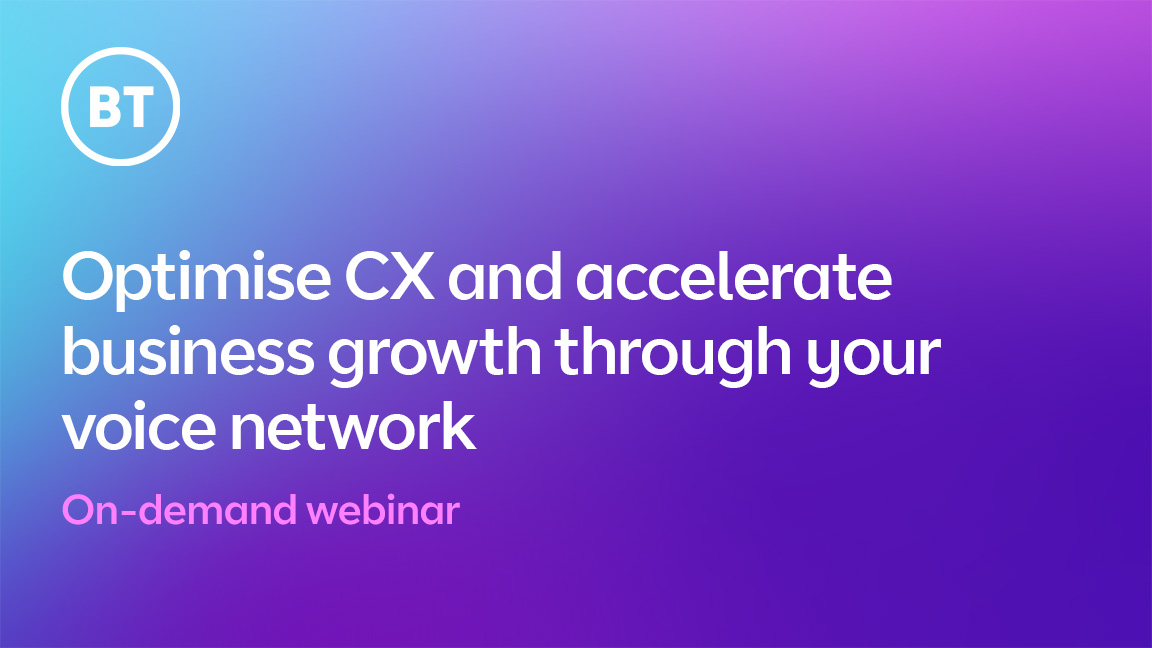 Optimise CX and accelerate business growth through your voice network
Optimise CX and accelerate business growth through your voice networkwhitepaper Protecting the human experience in a digital world
-
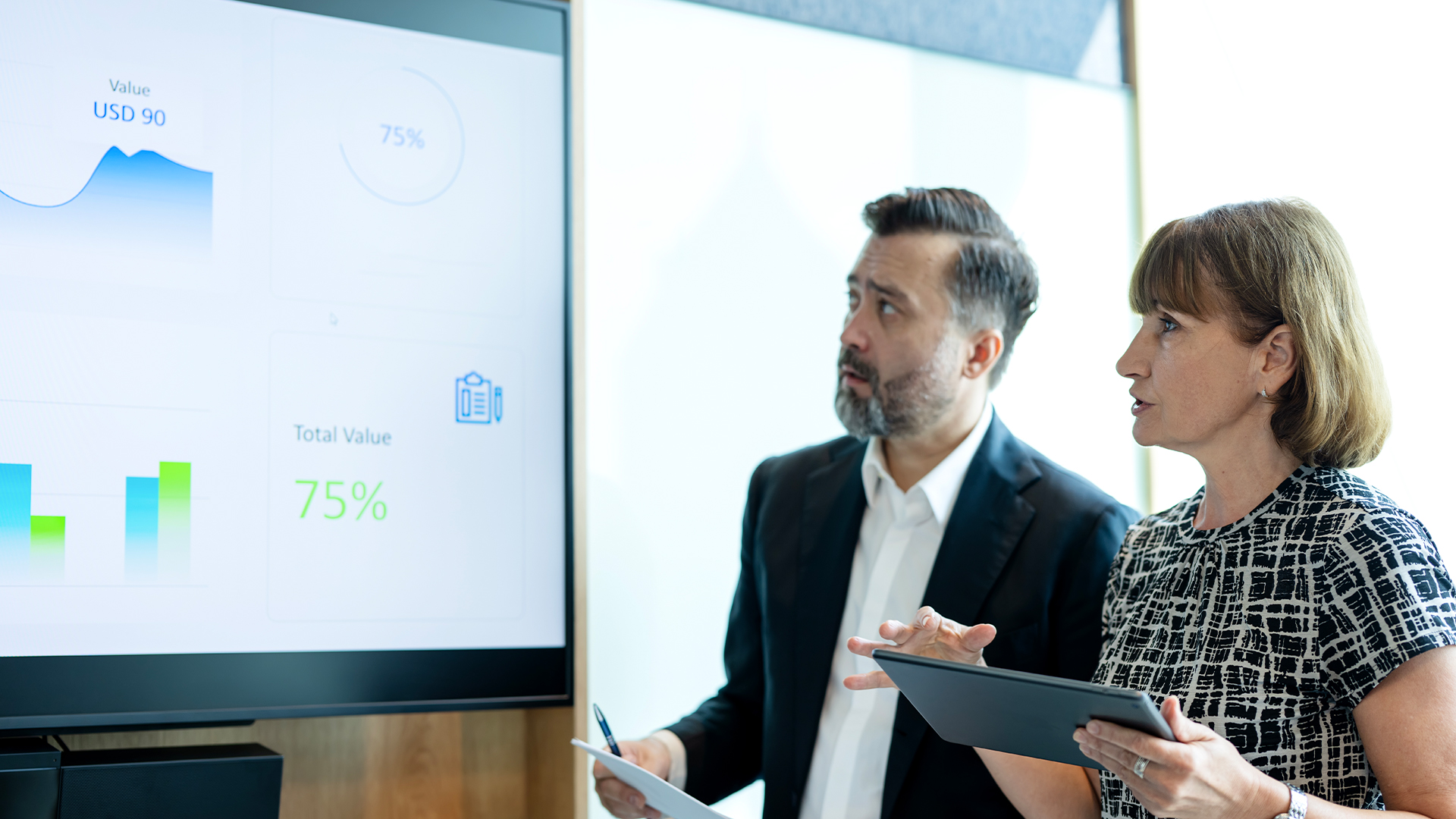 Enterprises are doubling down on IT optimization strategies – and it’s delivering huge financial returns
Enterprises are doubling down on IT optimization strategies – and it’s delivering huge financial returnsNews Organizations that have cracked IT cost optimization and innovation reap the rewards both financially and in terms of time to market.
-
 IDC InfoBrief: Sustainability doesn’t need to be all stick and no carrot
IDC InfoBrief: Sustainability doesn’t need to be all stick and no carrotwhitepaper CIOs are facing two conflicting strategic imperatives
-
 How to empower employees to accelerate emissions reduction
How to empower employees to accelerate emissions reductionin depth With ICT accounting for as much as 3% of global carbon emissions, the same as aviation, the industry needs to increase emissions reduction
-
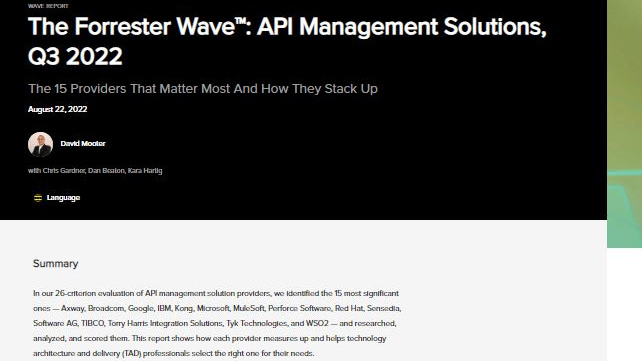 The Forrester Wave™: API management solutions
The Forrester Wave™: API management solutionsWhitepaper The 15 providers that matter the most and how they stack up
-
 Former TSB CIO fined £81,000 for botched IT migration
Former TSB CIO fined £81,000 for botched IT migrationNews It’s the first penalty imposed on an individual involved in the infamous migration project
-
 Schneider Electric unveils its first e-commerce partner program
Schneider Electric unveils its first e-commerce partner programNews Partners will be assigned a dedicated Schneider expert to aid strategy development
-
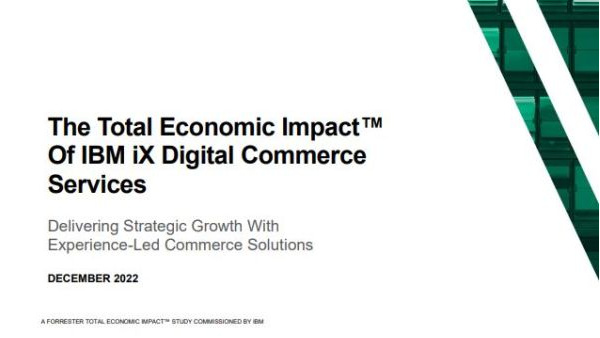 The Total Economic Impact™ of IBM iX digital commerce services
The Total Economic Impact™ of IBM iX digital commerce servicesWhitepaper Delivering strategic growth with experience-led commerce solutions

